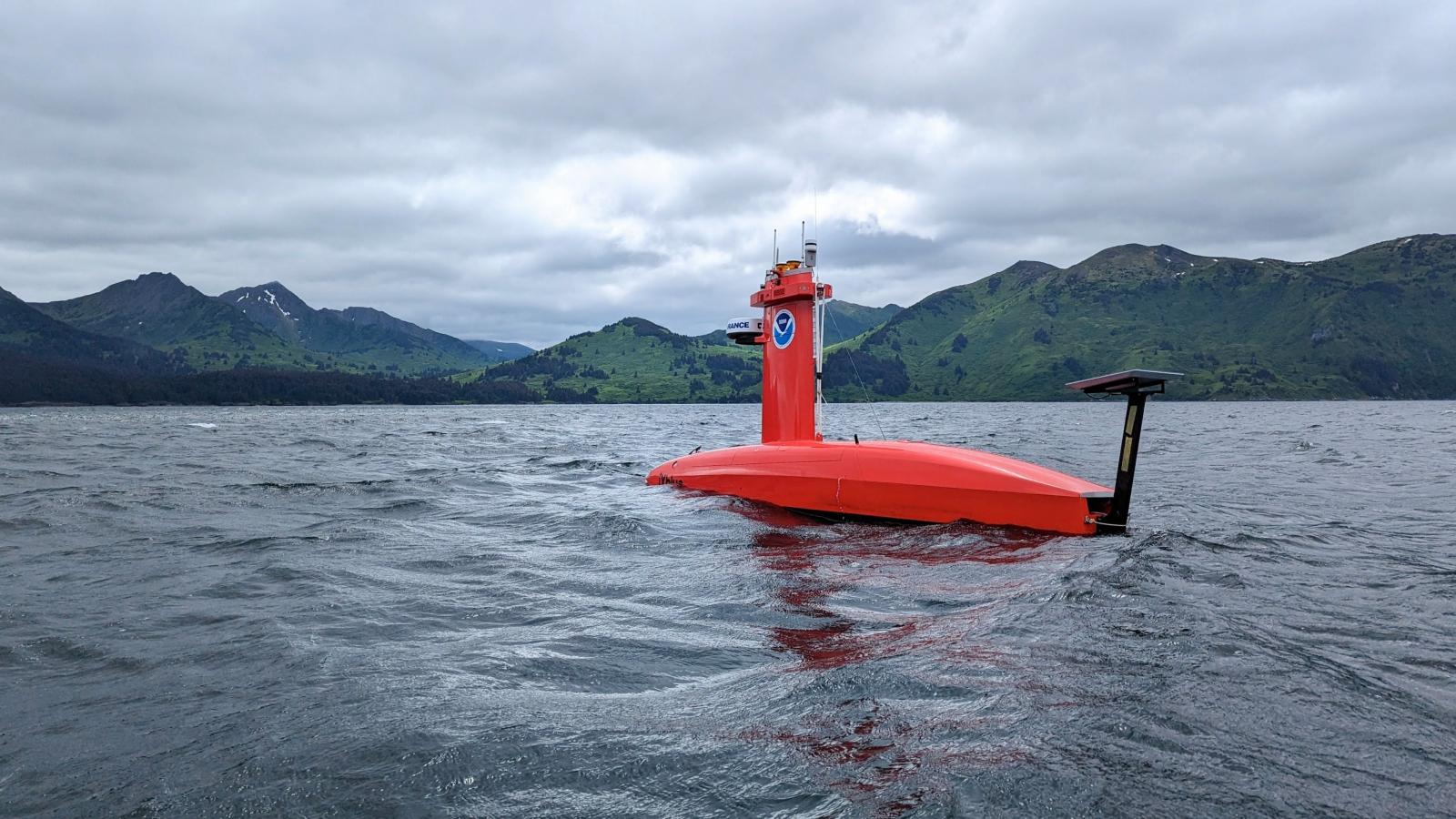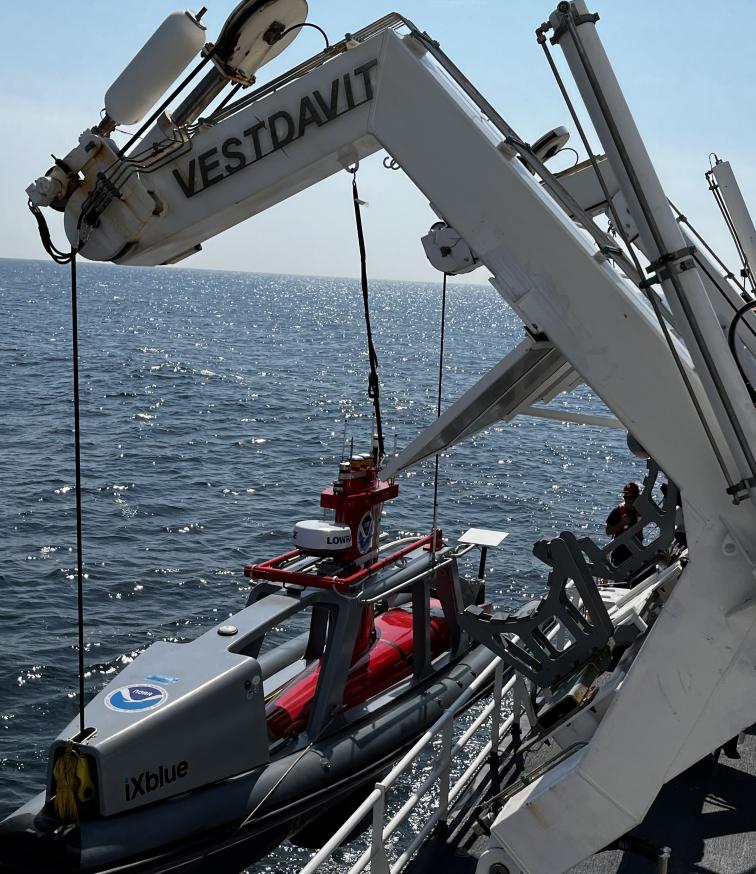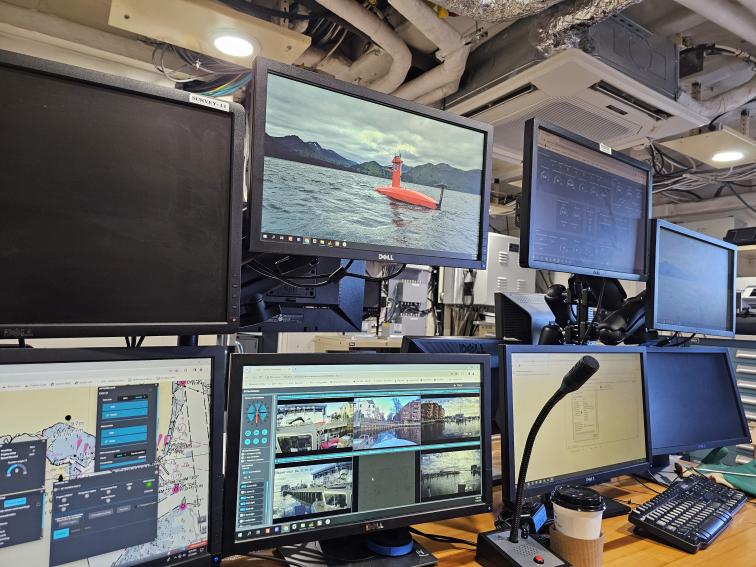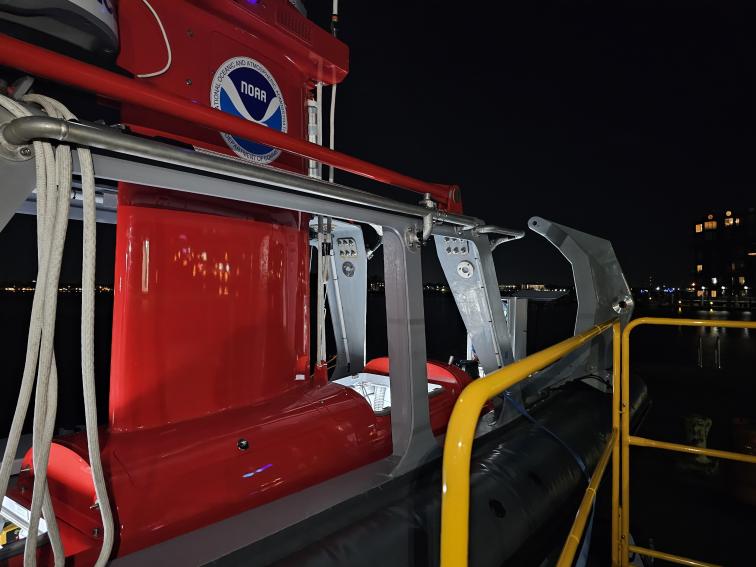
After transitioning the DriX uncrewed marine system to operations for hydrographic surveys in 2023, NOAA has put its newest operational platform to work. In 2024, the DriX was integrated with NOAA Ship Thomas Jefferson and spent April and May underway with the ship in support of their hydrographic surveys of the approaches to Savannah, Georgia.
During these surveys, the DriX and the Thomas Jefferson employed high-resolution scanners to paint a detailed picture of the seafloor. This information is used to update nautical charts and other navigation tools.
During these surveys, the DriX was able to operate for 48 hours at a time before returning back to the NOAA ship for routine checks and refueling. Keep reading to learn what those two days of operations look like for the DriX and its support team.
Getting Ready (Day: 1, Time: 0500)

Before the DriX can enter the water and start surveying, a team of DriX operators, technicians, and others aboard the ship must make sure everything is set for a safe and effective mission. After inspecting the system and assessing the weather and conditions for the survey period, the team meets for a final safety meeting to review the risk and other considerations for DriX operations during that period.
After clearing the DriX and the survey plan, attention is transitioned to the right side davit (see picture to right) where the DriX sits in a custom DriX Deployment System gondola for launching and recovering the DriX from the ship’s side. Through careful coordination between the DriX operators, ship operators, and ship deck team, the DriX is lowered into the water and released from the DriX Deployment System.
In the Water (Day: 1, Time: 0700)
Now that the DriX is in the water, the movement of the DriX is in the hands of one DriX operator while the deployment system is put away by the deck crew of the ship. Operators go through a rigorous training with the industry provider of DriX before they are certified to operate the platform. During this training, operators learn to "drive" the DriX and about the complexity of the DriX system.
After taking command of the DriX, the operators verify that all systems are in working condition and perform the necessary survey calibrations. The chief hydrographic survey technician and operations officer on the ship will provide information to the DriX operators concerning where to survey and parameterize how the survey should occur (for example, the maximum speed can be set to conserve fuel). From here, the DriX is put in autonomous mode and it performs the survey using these established parameters.

The DriX is monitored from the ship by two trained operators at all times while surveying, however, the DriX is relatively self sufficient in its operations. The DriX relies upon the concept of "supervised autonomy" similar to cruise control and object avoidance in modern day cars. It will plan its own survey route based upon the provided coordinates and instructions from the hydrographers on the ship and course correct to adjust for survey coverage. It can also course correct after detecting other objects in the water within half a mile of itself and make decisions based upon a set of rules provided by the operators.
As the DriX is surveying, the operators monitor marine radar and vessel traffic as if they were driving a crewed vessel. In the command space are over a dozen screens to maintain 360-degree awareness of the DriX and the data it is gathering. The operators also monitor conditions onboard the DriX and the status of onboard scientific equipment to make sure mission critical hydrographic data is being gathered. Like on the bridge of a crewed vessel, the DriX operators change shifts every 4 hours to make sure everyone is alert. Since the DriX operates with “supervised autonomy,” while the platform can gather data and course correct on its own, trained personnel are always maintaining oversight of the platform and environment. The trained operators are prepared to take command in the event of an issue, emergency, or interaction with other vessels should the system not respond as expected. When compared to a typical crewed small boat survey (also called a survey launch), crewed by three to four people at sea, the remote operation of a DriX can be safer and more efficient.
Back to the Mothership (Day: 2, Time: 0600)
After completing up to two days of survey operations the DriX returns to the Thomas Jefferson. Similarly to the deployment period, a team of experts works together to get the DriX back on board the ship. In order to get the DriX back onboard, the DriX Deployment System gondola is lowered over the side and the DriX is piloted into the gondola. After being secured, the DriX is lifted onboard the ship. In between operations, the DriX goes through a rigorous inspection and is prepared for another deployment. Depending on the goals of the operations, the DriX can be recovered in the morning and ready for another deployment by the afternoon.

While the NOAA Uncrewed Systems Operations Center, in partnership with the NOAA Marine Operations Center, NOAA Office of Coast Survey, and their industry partners Exail and Lynker are still evaluating the best operating model for the DriX, the platform has already proven to be an asset for NOAA in gathering hydrographic data. During operations, the DriX was able to nearly double the linear nautical miles surveyed by the ship’s crewed small boats and could survey 230 nautical miles without stopping. That distance surveyed is about the distance it takes to drive from New York City to Washington, D.C.!
In the coming months, the NOAA Uncrewed Systems Operations Center will be conducting checks on a new second DriX recently procured. They will also be working with their industry and academic partners to test new operating strategies for uncrewed systems.

